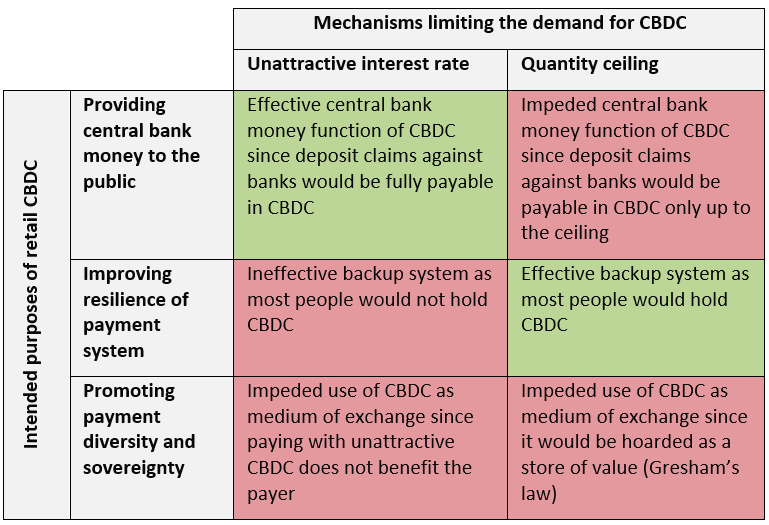References
Baeriswyl, R., Reynard, S. and Swoboda, A. (2021). Retail CBDC Purposes and Risk Transfers to the Central Bank. SNB Working Paper, No. 19/2021.
Barontini, C. and Holden, H. (2019). Proceeding with caution –a survey on central bank digital currency. BIS Paper, No. 101.
Bindseil, U. (2020). Tiered CBDC and the financial system. ECB Working Paper Series, No. 2351.
BIS (2020). Central bank digital currencies: foundational principles and core features. Report no 1 in a series of collaborations from a group of central bank.
ECB (2020). Report on a digital euro. Report on a digital euro (europa.eu)
Ingves, S. (2018). The e-krona and the payments of the future. Speech, 06/11/2018. https://www.riksbank.se/globalassets/media/tal/engelska/ingves/2018/the-e-krona-and-the-payments-of-the-future.pdf.






